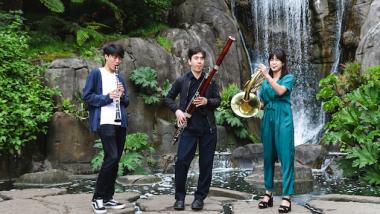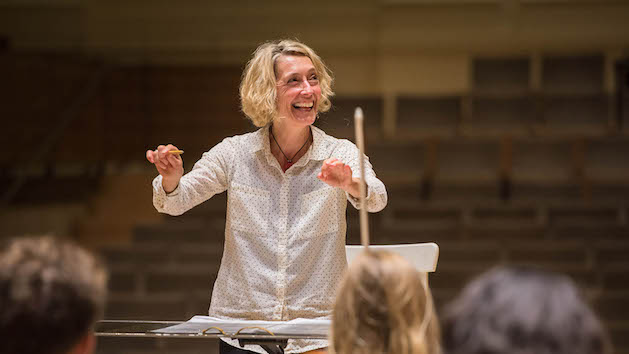
Good things do come in small packages, it turns out. The handful of spectators, including friends and family, that turned out to see Nicole Paiement lead the New Music Ensemble on Saturday, during the S.F. Conservatory of Music’s Kickoff Weekend, were treated to a short, but well-played and beautifully curated concert that seduced the listener while stretching the student musicians’ muscles. Paiement is at the top of her game, and if you’re missing opportunities to see her concerts out of some misplaced fear that the music will be uncongenial, well, you should reconsider.
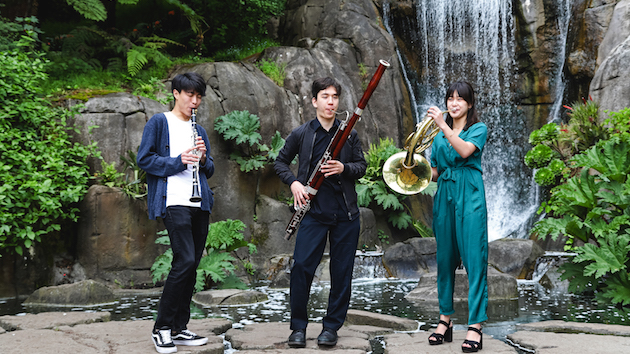
The hour-long concert was anchored by two large ensemble pieces: In a Treeless Place, Only Snow (1999) by John Luther Adams and Tree Line (1988) by Toru Takemitsu. (Both these pieces call for harp, two percussionists, keyboardist, and string quartet, though Takemitsu adds more instruments on top of that — a not accidental parallel in the program.) The nature theme that the Conservatory is using as a unifying element this school year extended to the smaller pieces on the concert: Constellations (2013), for flute and percussion, by Laura Schwendinger, and Le merle noir (The blackbird, 1952), for flute and piano, by Olivier Messiaen.
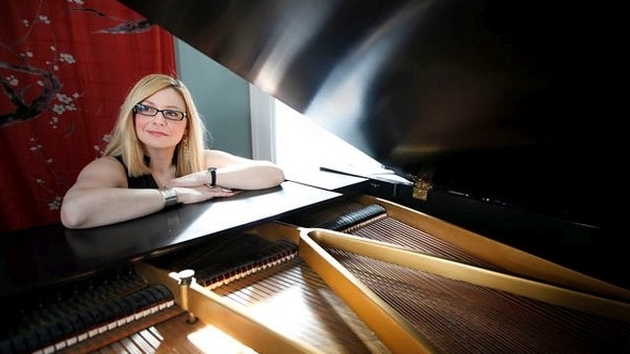
All of these pieces have intellectual/ theoretical rigor, but that’s not what strikes you about any of them, because they feel improvisatory, something that Paiement stressed in her brief but trenchant remarks about the music. Schwendinger’s seven-minute work takes advantage of the four common flutes (including, besides the C concert flute, the piccolo, alto, and bass flute) and unfolds a series of gestures that become more expansive in range and sharper in rhythmic profile as the music moves through the registers of the different flutes and the percussionist moves from the background, gently bowing on the vibraphone, into more complementary relations with the flute music. It’s an extremely dynamic process for such a contained piece. Julia Pyke (flute) and Caleb Smit (percussion) seemed fully at home in the music, giving a professional performance.

As Paiement pointed out, In a Treeless Place creates a sense of timelessness by erasing a sense of pulse: the celesta begins with a seven-note motive, the violin enters with a six-note melody taken up by the second violin, then the two vibes come in with a five-note pattern, and so on. The celesta is as straightforward a representation of silently falling snowflakes as you could want, while the steeply ascending, romantic melody in the violins sings of open space, and the fruitful pauses between entries of the melody represent stillness: “in a world going deaf with human noise, silence endures as a deep and resonant metaphor,” the composer wrote. Hard as it is to perform, the piece is sensuous, tonal, mesmerizing, and beautiful. Watch the video, if you’re having a difficult day. You’re welcome.
Despite its scant five minutes’ length, Le merle noir has been analyzed to death and is one of the bedrock pieces of the flute repertoire. It was Messiaen’s first foray into making a full piece of music out of birdsong and so it needs to feel free, despite its structure. Michelle Sung, with faculty pianist Keisuke Nakagoshi, managed that feat almost perfectly. I wish she had not broken the feeling the moment she was done and then rushed offstage after a quick bow. In order to hear echoes of the eternal in birdsong, the audience needs a few seconds of silence after the last note.
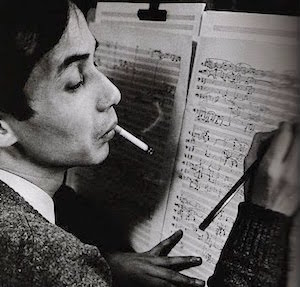
Toru Takemitsu’s unclassifiable Tree Line is a mysteriously evocative piece, a little more astringent than Adams’s, with echoes of Messiaen and Debussy as well as references to traditional Japanese music, which Takemitsu had eschewed in his earlier music. Varied melodic ideas sprout unexpectedly throughout the piece, so the challenge is to make each gesture clear in meaning. You could imagine a performance with the contrasts more fully explored, maybe, but there was nothing to complain of in this performance, which ended with a lovely oboe solo from Jasper Igusa. The players deserved a larger audience for all their hard work, but I appreciated them going all out for just us lucky few.

